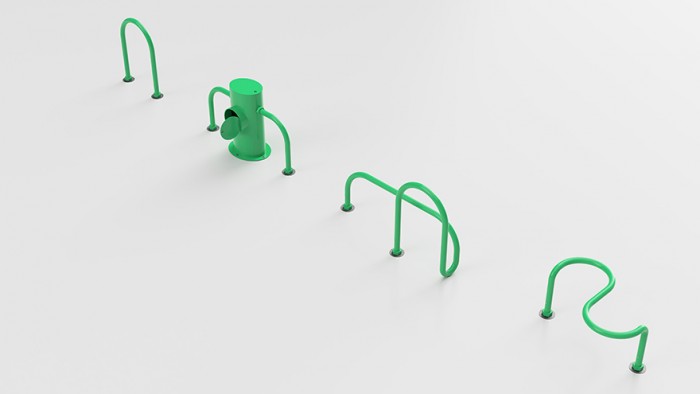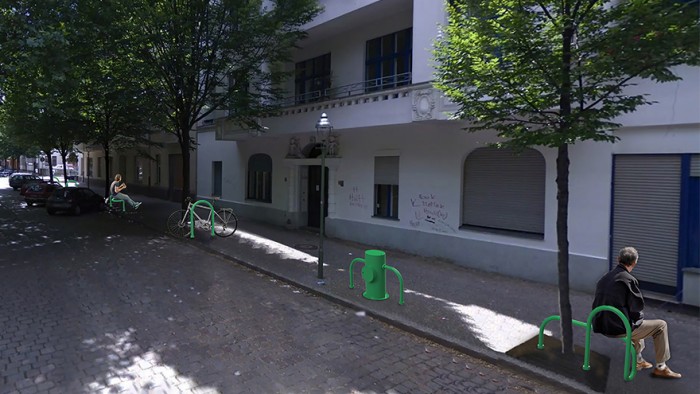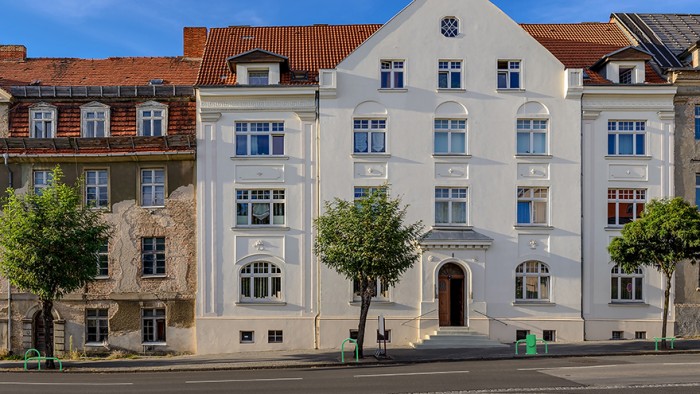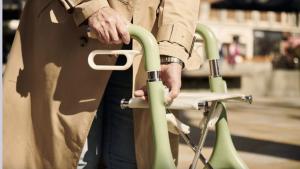There is an enormous public demand for cities to have high-quality and sufficiently dimensioned green infrastructure. Trees and plants counteract the urban heat-island effect and provide fresh air, particularly to dense areas.
Over 400,000 city trees are located in Berlin alone. Over the last two years, 7 000 of these trees have died as a consequence of drought. Inadequately sized tree grates are a significant reason for city tree drought.
In Berlin, tree grates typically only measure 1.50m by 1.50m. Forest trees, by comparison, have the area of their crowns irrigated when raining – this is around 10 times greater than a city grate. Under these circumstances, city trees, on pavements especially, are only able to store minimal water and can’t photosynthesise properly. The additional burden of climate change, like more frequent heat waves, leads to decreased biomass and leaves and subsequently to the death of the trees.
At the same time, there is a functioning water cycle system under Berlin’s pavements. Underground hydrants provide access to the supply lines and are located next to the trees.
Nessi has a mission: Combining the use of hydrants with the drought of trees by hacking the existing system of pavement hydrants that have direct access to the water supply lines. In dense areas, you can find underground hydrants every 100 - 150 m located on the lower part of the pavement. Usually, they are used for firefighting and should be flushed regularly to stay fit and clean.
“To share the water, Nessi docks to a hydrant and winds its way through Berlin’s streets from bottom to top. From the hydrant, water is directed automatically to the trees through a pipeline that lies under the pavement and pops up by the trees. Next to the hydrant valve, a second valve, adjusted via an irrigation computer located inside the object, allows the water to flow through Nessi’s pipe. It is the same principle as an automatic irrigation system from horticulture where the setting determines when and how much the trees should be watered - depending on the age, size and location of the tree,” states the designer.
Nessi marks the trees that are part of the network with colourful steel tube objects that offer various usage possibilities for us residents like bike racks or benches. Regardless of accidental or purposeful damage, once installed, the objects can easily be mounted and changed.
“Regular, optimised irrigation increases the pore space and rooting depth of trees, which increases the evaporation and cooling capacity of urban soils. The healthy trees reduce surface and air temperatures by providing shade and evapotranspiration, counteracting the urban heat-island effect. Nessi is sustainably supporting air pollution control and the health of local residents through healthy, well-watered trees in urban areas,” states Kuhl.
Tackling the drought of city trees on pavements with a simple irrigation system that makes use of the existing infrastructure, Nessi contributes to the saving of our urban greens. Additionally, thanks to Nessi, hydrants will become well-maintained and continue to provide easy access for firefighters when needed. Nessi addresses the UN’s SDGs 9,11,13 and 15 – resilient infrastructure, sustainable cities and communities, climate action and life on land.
Kuhl is currently studying for her Master's degree in the design and social context department at the University of the Arts in Berlin. Kuhl deals with relevant questions of urban systems in the context of social and ecological changes. Her goal is to rethink spatial and social structures in urban space, creating objects that mix up with nature in the city in a way that contributes to environmentally-oriented urban development.
Watch Kuhl discuss Nessi via our YouTube channel.
Read more:
Maxwell Ashford presents his robotically recycled footwear at antenna 2021.
antenna 2021 graduate, Benjamin Bichsel tackles plastic clothing waste.













